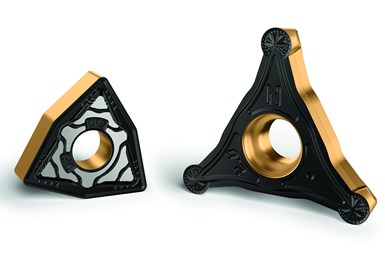Walter Introduces New Insert Grades for Turning Steel
Walter offers three Tiger·tec Gold grades specifically designed for turning operations in steel and cast iron.
Share



Takumi USA
Featured Content
View More






Hwacheon Machinery America, Inc.
Featured Content
View MoreWalter USA introduces new grades of Tiger·tec Gold inserts for turning steel with a variety of both negative and positive geometries. The WPP10G grade is primarily for continuous cuts and highest cutting speeds. According to the company, the WPP20G is a universal grade ideal for most applications, with an optimized performance between toughness, hardness and tool life. The tough WPP30G grade is for interrupted cuts and unfavorable machining conditions. Walter now offers three Tiger·tec Gold grades specifically designed for turning operations in steel (with cast iron as a secondary application). In hundreds of customer tests globally these new inserts have reportedly increased tool life by an average of approximately 50%, which Walter says is largely due to their layered structure of coatings.
A patent-pending, highly textured, multi-layered MT-TiCN layer increases toughness and reduces flank face wear, resulting in lower cost per cutting edge. The inserts’ highly textured Al2O3 layer is said to minimize crater wear, and the gold-colored top layer improves wear detection. The gradient carbide substrate boosts wear resistance and toughness. In addition, Walter provides its signature multi-stage post-treatment, which produces a smooth rake face that is said to reduce friction and increase toughness, ensuring high process reliability in automated processes. With this expansion of the product range, Walter says users can now benefit from maximum flexibility and minimal component costs when turning.
Related Content
-
The Impact of Cutting Teeth Spacing on Machining Stability
Many cutter designs are available, and variable teeth spacing (or variable pitch) cutters can be used to influence milling stability. Let’s discuss why teeth spacing affects stability.
-
Shoulder Milling Cuts Racing Part's Cycle Time By Over 50%
Pairing a shoulder mill with a five-axis machine has cut costs and cycle times for one of TTI Machine’s parts, enabling it to support a niche racing community.
-
High-Feed Machining Dominates Cutting Tool Event
At its New Product Rollout, Ingersoll showcased a number of options for high-feed machining, demonstrating the strategy’s growing footprint in the industry.



































